Touch Temperature – Part 1a: Why Woolen Sauna Hats Are a Thing
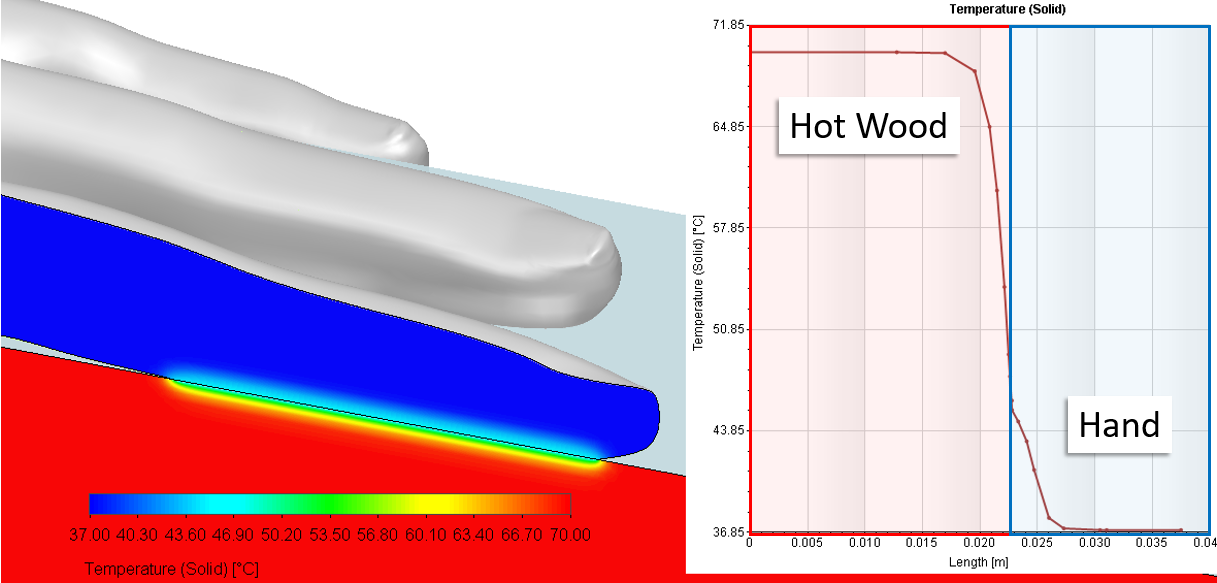
Contact Temperature
When 2 objects abut each other, at their interface they will share a common temperature, a contact temperature. If part of a human body is touching an object, this shared temperature would be called a touch temperature. The touch temperature would be somewhere between the temperature of the object and the temperature of the body part (let’s assume a hand, what else?). The touch temperature is not simply an average of the 2 temperatures, that would be too easy of course!
Thermal Effusivity
(For those with a nervous disposition towards math(s), feel free to jump to the pretty animation further on…)
Let’s consider the situation when 2 objects abut, one is hotter (T1) than the other (T2) but they share a common contact temperature (Tc).
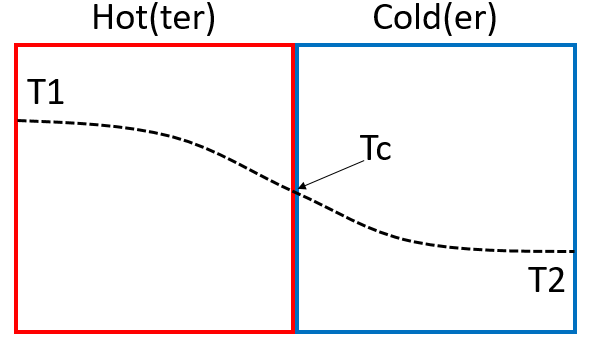
To keep things analytically simple, let’s also assume a 1D heat flow such that Tc is constant along the interface.
Take a thin dX slice of material, either side of the interface, and assume these 2 conditions
- The heat flow through one dX slice = the heat flow through the abutting dX slice. Where k is the thermal conductivity of each material:

- The energy flowing out of the hotter slice is absorbed by the cooler slice. Where rho is the material density and Cp is its specific heat:

Where the temperature differences are: 
After a little bit of rearranging, you get a ratio of the 2 temperature differences defined as: 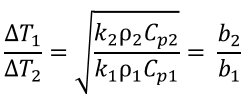
The b terms are what are known as thermal effusivities. Properties of each material, a combination of their ability to conduct heat and their ability to store it.
One final bit of rearranging and you get an analytical expression for the contact temperature: 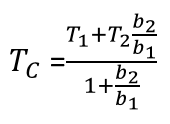
So, certainly not a simple average of the 2 object temperatures, but a function of the material properties, and of course temperatures of each.
[Condition 2 relies on the assumption that both bodies are ‘infinite’ enough so that there is enough energy to support the constant flow of heat from the hotter to colder body. Something that doesn’t happen when say you touch a tin foil (high thermal effusivity but low thermal mass) after it comes directly out of an oven.]
Touching Objects in a Sauna
Let’s get back into the 70 degC sauna with our 37 degC hands and look at what the touch temperature would be were we to touch these range of objects:
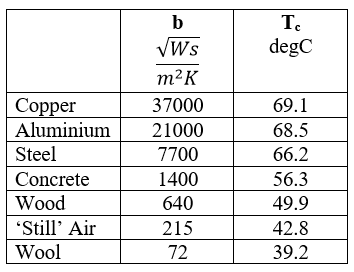
Copper benches are a really really bad idea, as are any metal. Concrete is a bit toasty as well. Wood is not too bad, a bit warmer than ‘touching’ ‘still’ air (free air is never really still and it’s a bit weird in that we never think about touching air?).
Wool, with it very low effective thermal conductivity (fibers and trapped stationary air) and low thermal mass, would actually feel cooler than the sauna air!
Stupid Physics
It’s at this point I went back and double checked all the calculations because surely wearing woolen gloves, or putting a woolen hat on, would make you feel hotter in a sauna, not cooler, right?
For a laugh I Googled ‘Woolen Sauna Hat’ and got this (who’s laughing now Robin?):
Touch Temperature Doesn’t Change
Following on from my incredulity regarding sauna hats, I was further dumbfounded by the fact that touch temperature doesn’t change after initial contact. You’d have thought that the longer you touched a hotter surface, the hotter the touch temperature would become. Well, not exactly.
Using Simcenter FLOEFD’s excellent ‘transient explorer’ feature I plotted the temperature variation on a line bisecting the bench/hand interface of the sauna model from the previous blog. I then animated how this temperature profile varied over time, from initial contact and the following 5 seconds:
It takes about 0.3s for the touch temperature to stabilise, then it remains pretty constant. With no Trpv1 receptors in the outer epidermis layer itself, you never actually feel the true touch temperature. The dermis layer starts at ~0.1mm below and extends for a further 2mm. At this slight offset distance from the touch interface, the temperature takes a bit longer to stabilise, giving you a growing sense of potential burning as more and more of those receptors fire off their warning signals to the brain.
Those with eagle eyes might correlate the 3D prediction of the touch temperatures with the analytical values given in the above table. The analytical values slightly over estimate Tc due to the non-1D nature of the hand/bench heat transfer.
Hats Off

This study was as much inspired as it was informed by the excellent Cooling of Electronics course provided by Clemens Lasance (Emeritus, Phillips Research Laboratories (also the first Simcenter Flotherm user)) and Wendy Luiten (ex-Philips, now consulting at WLC).
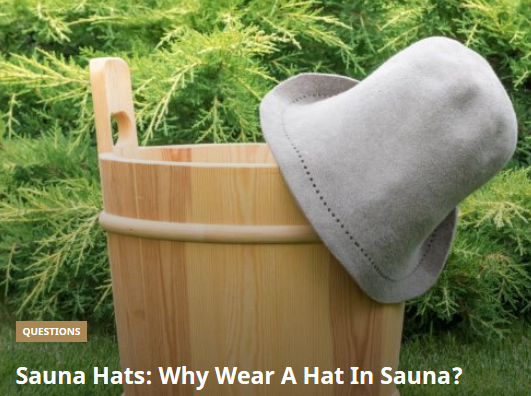



Comments
Comments are closed.